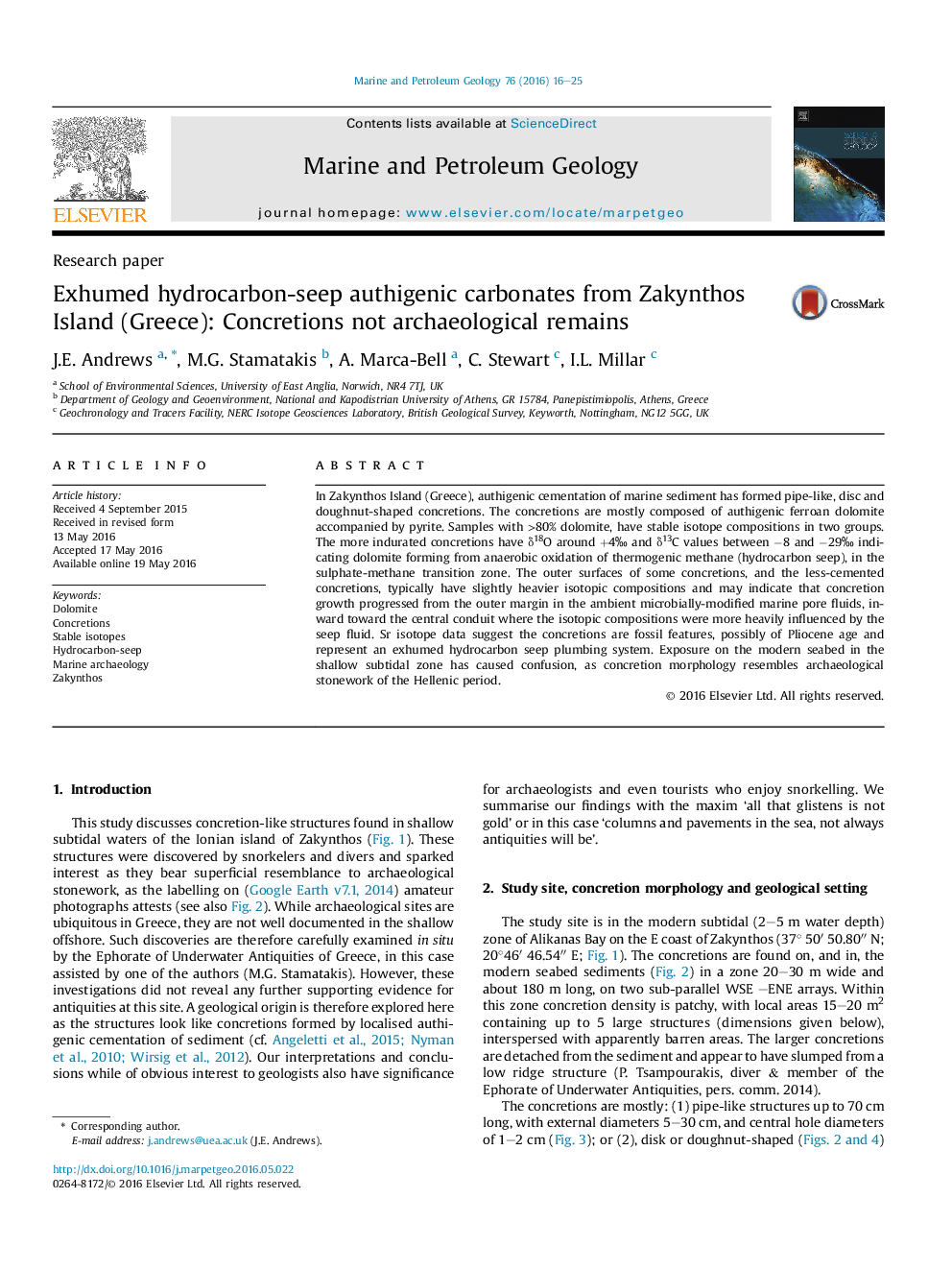| Article ID | Journal | Published Year | Pages | File Type |
|---|---|---|---|---|
| 6434712 | Marine and Petroleum Geology | 2016 | 10 Pages |
â¢Columnar and slab-like structures in the modern shallow subtidal of Greece promoted research into possible classical archaeological remains.â¢This research shows the structures are actually exhumed fossil hydrocarbon seep concretions.â¢Fe-dolomite mineralogy and carbon isotopes are diagnostic of methane oxidation and authigenesis in the sulphate-methane transition zone.â¢A rare example of hydrocarbon-seep authigenic carbonates in a shallow shelf setting.
In Zakynthos Island (Greece), authigenic cementation of marine sediment has formed pipe-like, disc and doughnut-shaped concretions. The concretions are mostly composed of authigenic ferroan dolomite accompanied by pyrite. Samples with >80% dolomite, have stable isotope compositions in two groups. The more indurated concretions have δ18O around +4â° and δ13C values between â8 and â29â° indicating dolomite forming from anaerobic oxidation of thermogenic methane (hydrocarbon seep), in the sulphate-methane transition zone. The outer surfaces of some concretions, and the less-cemented concretions, typically have slightly heavier isotopic compositions and may indicate that concretion growth progressed from the outer margin in the ambient microbially-modified marine pore fluids, inward toward the central conduit where the isotopic compositions were more heavily influenced by the seep fluid. Sr isotope data suggest the concretions are fossil features, possibly of Pliocene age and represent an exhumed hydrocarbon seep plumbing system. Exposure on the modern seabed in the shallow subtidal zone has caused confusion, as concretion morphology resembles archaeological stonework of the Hellenic period.
